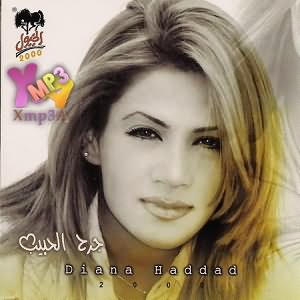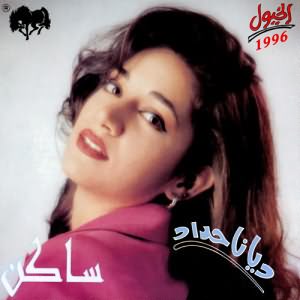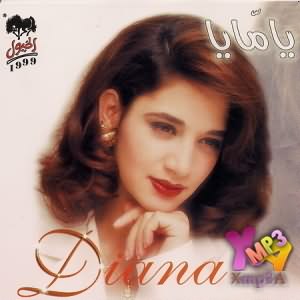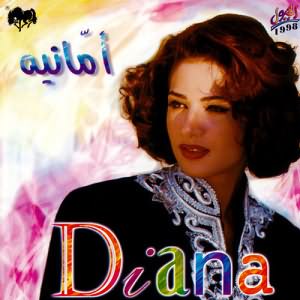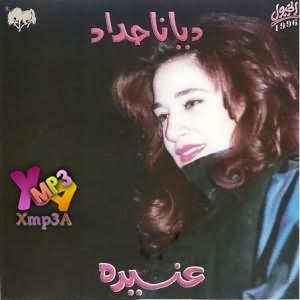About Diana Hadad

Diana Hadad
Full Name : Diana Joseph Haddad
Birth Date : 01 - OCT - 1976
Birth Place : South Lebanon
A star who made it to the top from the very beginning, she is an Arabic singer with a beautiful voice and an unbeatable talent. Diana Joseph Haddad was born in a small village called Bsalim in Southern Lebanon on October 1st, 1976. A few years after she was born, Diana`s family immigrated to Kuwait for a better chance. Diana grew up in Kuwait and went to school there, until her family went back to Lebanon after the Gulf War in 1990. Diana`s talent was discovered at an early age, as she won the competition for \"Studio El-Fan\", a famous Lebanese TV series known for discovering musical talents.
Diana was only 16 when she started working on her debut album. The album took three years to prepare since Diana was also working on her high school degree followed by her associate degree in Computer Science. During this time Diana met the Emeriti TV director Suhail Al-Abdool. They got married in 1995 and created a dynamic duo. Suhail is involved in Diana`s musical career and to date has directed all her video clips. Diana & Suhail have one daughter, Sofy. She was born in July 1996.
In 1996, and after three years of hard work, Diana Haddad released her debut album, \"Saken\". The album instantly became a major hit all over the Arab World. The songs \"Lagetik\", \"El-Sahra\", and the title track \"Saken\" were released almost simultaneously, and all became major hits.
Now that the first album was a major success, Diana Haddad decided to show the world that she is a great live performer as well. Hence, a follow-up album, named Aneeda, was released shortly after Saken. Aneeda was a live concert album, in which Diana sang songs from Saken, a couple of classic songs, and one new song \"Aneeda\", which was later released on her next studio album.
Diana`s second album \"Ahel El-Eshig\", which was released on February 1997, continued along the lines established by her debut album. The album was yet another hit for Diana, especially the title song. By that time, Diana truly established herself as a top selling Lebanese singer, but what was coming was even more.
Diana`s third album \"Ammaneh\" was released in late 1997. Ammaneh album was spectacular in every sense of the word, featuring different colors and different music genres Diana never did before. The album sold millions of copies not only in the middle east, but also in Europe, the US, and all other parts of the world. The title track became Diana�s signature song, which to date is her most popular work ever. Ammaneh, the album, still holds as one of the biggest selling albums ever in the Arab World. \"Yama Ya\", Diana`s fourth album, was released in late 1998. What is unique about Yama Ya is that each song on the album was sung in a different Arabic dialect: Original Arabic, Egyptian, Lebanese, and Gulfian. In \"Yama Ya\", Diana touched on several topics, such as love, life and death, faith, and virtue. Sadly, shortly after the album was released, Diana`s mother deceased, and hence the album�s theme became more personal than ever for Diana.
In the summer of 1999, Diana released her fifth album, \"Shater\". Shater music was mostly of modern pop, and showcased a joyful Diana enjoying the most simple things in life such as nature and the sun. Shater continued along the lines of \"Ammaneh\"; several collaborations and joyful music. A celebration of life, \"Shater\" also had one sad song named \"Weenhom\", which Diana dedicated to her mother.
Expanding the horizons of her singing career, Diana released her sixth album, Jarh El-Habeeb, in the summer of 2000. Jarh El-Habeeb featured great pop and classic cuts, ranging from slow-themed love song \"Ba�ali Zaman\" to the fast paced anthem \"Mani Mani\", to the Wade�e El-Safi tribute \"Noor Enayeh\" to the title track, which was a collaboration with (and a tribute to) the great musician Mohammed El-Ezabi. Jarh El-Habeeb established an image of an older, artistically mature Diana Haddad.
Summer of 2001 witnessed the release of Akhbar Helwa, Diana�s seventh album. The music on this album reached an edgier end, having distinct, rich music made it stand out and outperform then-new one hit wonders. Akhbar Helwa was the eight album in terms of her contract with Stallions (Aneeda counted as a release).
Diana signed a record deal with Alam El-Fan later that year, which is perhaps why Akhbar Helwa had only one video clip.
Law Yesaloni, Diana�s 2002 album is the first themed Diana album; Diana has always released one or two Khaliji (Gulf Dialect) songs on her albums, but this was the first time for her to release a 100% Khaliji album. Indeed, it was a first a Lebanese artist releases a Khaliji album. Law Yesaloni was an instant hit in the Gulf and did great in other Arab countries as well. Again, Diana released only one video of the album, the title track \"Law Yesaaloni\".
Early in 2003, Diana released a single song called \"Bi Edak El-Karar\", a song talking about the dangers of drug and alcohol use. The song was video clipped as well.
Diana�s next album, initially titled \"Diana 2003\", was supposed to be released in the summer of 2003. However, Diana was not satisfied with the overall product so she decided to record more songs and remove others, the thing which caused delays. The album is to be released early 2004, and will be named \"Awel Mara\". Eight years, eight albums, millions of records sold, and millions of fans around the world. Diana Haddad truly proved that she is indeed Nejmet El-Arab, The Star of Arabia.
Albums
-
#SinglesHits
-
13876
-
21364
-
31138
-
41024
-
5857
-
6754
-
7709
-
8495
-
9472
-
10455
-
11425
-
12420
-
13371
-
14353
-
15276
ديانا حداد, كفرات البومات ديانا حداد, المطربه ديانا حداد, اغانى ديانا حداد, ديانا حداد, xmp3 , download, free, flac, aac, itunes, covers, remixes ,EXCLUSIVE ALBUMS , NEW RELEASES , LATEST SINGLES , RECOMMENDED FOR YOU , Videos , music
Update Required
To play the media you will need to either update your browser to a recent version or update your Flash plugin.
EXCLUSIVE ALBUMS, Xmp3A, Download FLAC Albums, iTunes, CD Covers, Remixes, Singles, Albums, Hi-Res, TIDAL, deezer, Spotify, amr diab flac, ����� ����� flac



